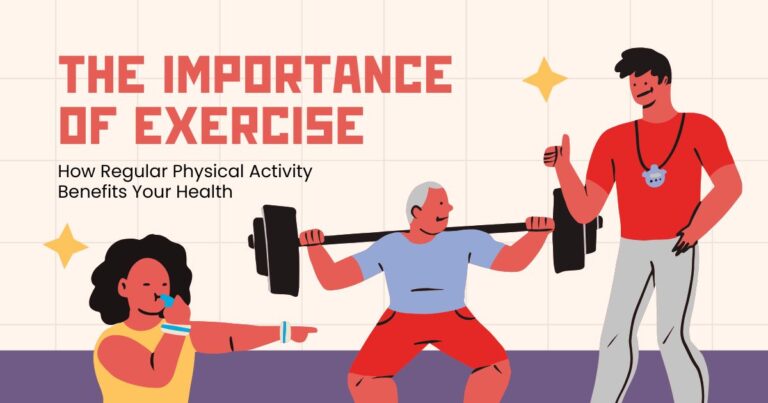In today’s busy lifestyle, incorporating fitness and exercise into our daily routine is more important than ever. With a growing body of research highlighting the benefits of physical activity, it’s clear that engaging in regular exercise can transform not just your body, but also your mind. This guide will explore the health benefits of fitness, provide tips on how to get started, and share strategies to help you improve over time.

The Health Benefits of Fitness and Exercise
1. Physical Health Improvements
Engaging in regular fitness activities can lead to significant improvements in your physical health. Here are some key benefits:
a. Weight Management
One of the primary reasons people start exercising is for weight management. Regular physical activity helps to burn calories, which is crucial for weight loss or maintaining a healthy weight. According to the CDC, even moderate-intensity activities like brisk walking can significantly contribute to calorie expenditure.
b. Cardiovascular Health
Exercise is vital for heart health. Activities such as running, cycling, and swimming strengthen the heart muscle, improve circulation, and lower blood pressure. Regular aerobic exercise can also help to reduce bad cholesterol (LDL) and increase good cholesterol (HDL), reducing the risk of heart disease.
c. Strengthening Bones and Muscles
Weight-bearing exercises, like lifting weights or doing bodyweight workouts, are essential for maintaining bone density and muscle strength. This is particularly important as we age, as it reduces the risk of osteoporosis and frailty.
d. Improved Immune Function
Regular exercise has been shown to boost the immune system. Moderate physical activity can lead to better immune responses, which can help in preventing illness and infections.
2. Mental Health Benefits
The mental health benefits of fitness and exercise are profound. Here’s how staying active can enhance your mental well-being:
a. Stress Reduction
Physical activity can significantly reduce stress levels. When you exercise, your body releases endorphins, often referred to as “feel-good” hormones, which can help alleviate feelings of stress and anxiety.
b. Enhanced Mood
Regular exercise is linked to lower levels of depression and anxiety. A study published in the Journal of Clinical Psychiatry found that even a single workout can improve mood and emotional state.
c. Better Sleep Quality
Engaging in regular fitness activities can help you fall asleep faster and enjoy deeper sleep. Improved sleep quality is crucial for overall health, enhancing recovery and mental function.
d. Increased Cognitive Function
Exercise has been shown to improve brain function and cognitive abilities. Activities that increase heart rate promote blood flow to the brain, enhancing memory, concentration, and overall cognitive performance.
3. Social Benefits of Fitness
Joining fitness classes or sports teams can also improve your social life. Building connections with others through shared fitness goals can create a support network that motivates and encourages you. Group activities can foster friendships and provide a sense of community, making your fitness journey more enjoyable.
How to Get Started with Fitness and Exercise
Starting your fitness journey may seem overwhelming, but it doesn’t have to be. Here’s a step-by-step guide to help you get started on the right foot.
1. Set Clear and Realistic Goals
Before you begin, it’s essential to set clear, achievable goals. Consider what you want to accomplish with your fitness routine. Your goals can be specific (like running a 5K), measurable (such as losing 10 pounds), or general (like feeling healthier). SMART (Specific, Measurable, Achievable, Relevant, Time-bound) goals can provide clarity and motivation.
2. Find Activities You Enjoy
The key to sticking with a fitness routine is to choose activities you genuinely enjoy. If you dread your workouts, you’re less likely to stay committed. Explore different options like:
Dancing
Swimming
Cycling
Hiking
Yoga
Finding joy in your workouts will make them feel less like a chore and more like a fun part of your day.
3. Start Slow and Gradually Increase Intensity
If you’re new to exercise, start with short sessions of moderate activity. It’s essential to listen to your body and not push too hard too soon. Gradually increase the duration and intensity of your workouts to avoid injury and burnout. A common recommendation is to start with 20-30 minutes of activity, 3-5 times a week, and then build from there.
4. Create a Consistent Routine
Establishing a workout schedule can help you stay on track. Choose specific days and times for your workouts, and treat them as appointments you cannot miss. Consistency is key to developing a lasting fitness habit. Whether it’s morning workouts or evening sessions, find a routine that fits your lifestyle.
5. Stay Hydrated and Nourish Your Body
Proper nutrition and hydration are vital for optimal performance and recovery. Aim to drink plenty of water before, during, and after workouts. Focus on a balanced diet rich in:
Fruits and vegetables
Lean proteins
Whole grains
Healthy fats
Consider consulting a nutritionist for personalized dietary advice that complements your fitness goals.
How to Get Better at Fitness and Exercise
Once you’ve established a fitness routine, the next step is to continuously challenge yourself and improve. Here are some strategies to help you elevate your fitness level.
1. Track Your Progress
Keeping a record of your workouts can be incredibly motivating. Use a journal, app, or wearable fitness tracker to monitor your progress. Record details like workout duration, distance, weights lifted, and how you feel after each session. Seeing your improvements over time can keep you motivated.
2. Mix Up Your Routine
Avoid hitting a plateau by incorporating a variety of exercises into your routine. Cross-training—combining different types of workouts—can help you build overall fitness, prevent boredom, and reduce the risk of injury. Try alternating between:
Cardio exercises (running, cycling, swimming)
Strength training (weight lifting, resistance bands)
Flexibility and balance exercises (yoga, Pilates)
3. Set New Challenges
As you progress, continue to set new challenges for yourself. This could involve increasing weights, adding more repetitions, or trying new sports. Participating in local races or fitness events can also provide a goal to work toward.
4. Stay Educated
Learning about fitness and health can help you make informed decisions about your routine. Read books, attend workshops, or follow reputable fitness blogs and social media accounts. Understanding the science behind exercise can also keep you motivated and engaged.
5. Listen to Your Body
While pushing your limits is essential for improvement, it’s also crucial to listen to your body. If you experience pain or excessive fatigue, take a break or modify your routine. Recovery is an integral part of any fitness program, allowing your body to repair and grow stronger.
6. Consider Professional Guidance
If you’re unsure about how to structure your workouts or want to enhance your training, consider hiring a personal trainer. A qualified trainer can provide personalized guidance, help you set realistic goals, and ensure you use proper form to prevent injury.
Conclusion
Incorporating fitness and exercise into your daily life can lead to countless health benefits, both physically and mentally. By understanding these benefits, setting realistic goals, and continually challenging yourself, you can embark on a rewarding fitness journey that enhances your overall well-being. Remember that consistency is key, and finding joy in your activities will make your fitness routine a sustainable part of your life.
Start today, and take the first step toward a healthier, happier you!





